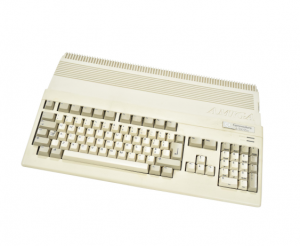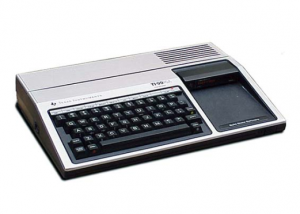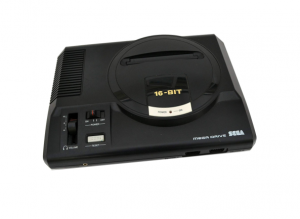The first entry to the markets by Commodore
The late 1970s marked the dawn of the home computer revolution, with 1977 often remembered as the “trinity year” of personal computing. In that year, three machines—the Apple II, the Tandy/Radio Shack TRS-80, and the Commodore PET—were launched, defining the early landscape of microcomputing. Among these, the Commodore PET (Personal Electronic Transactor) was Commodore’s entry into the rapidly growing market and became a pioneering system that bridged the gap between hobbyist electronics and business-ready personal computers.The Commodore PET was officially introduced at the Winter Consumer Electronics Show in January 1977, with shipments beginning later that year. It was the first fully integrated personal computer from Commodore, a company that had previously made calculators and electronic typewriters.
The PET combined a monitor, keyboard, and cassette tape drive in a single case—a novel design at the time that contrasted with the modular approach of early competitors. The 1977 market was in flux. Before the “trinity,” personal computers such as the Altair 8800 (1975) and IMSAI 8080 were available but were mainly kit-based systems for hobbyists. By contrast, the PET, the TRS-80, and the Apple II were complete, consumer-ready systems. Each offered a different vision: Apple focused on expandability and graphics, Tandy emphasized affordability and widespread retail availability, and Commodore targeted schools and businesses with an all-in-one design.
The original PET 2001 shipped with 4 KB or 8 KB of RAM, a built-in monochrome display, and a built-in cassette deck for data storage. It was powered by the MOS Technology 6502 microprocessor, running at 1 MHz. The PET’s design emphasized simplicity and robustness, which made it especially appealing for educational markets. The “chiclet” keyboard of the first models was criticized for being small and awkward, but later revisions introduced full-sized keyboards.
The PET ran Commodore BASIC, developed by Microsoft, which gave it compatibility with a wide range of early software written in BASIC. It lacked color graphics and had limited sound, which positioned it more as a practical computer than an entertainment device, though it nevertheless became a platform for early video games. The Commodore PET was especially successful in North America and Canada, where it penetrated schools and small businesses. Its durability and integrated design made it attractive for classrooms, as fewer components could break or be stolen. It also found adoption in the United Kingdom, particularly in schools before the BBC Micro and Sinclair ZX Spectrum rose to prominence. Exact sales figures for the PET are difficult to confirm, but estimates suggest that between 200,000 and 300,000 units were sold worldwide during its lifespan from 1977 into the early 1980s. This figure was modest compared to the millions of Apple IIs and Commodore 64s that followed, but the PET’s importance lay in being Commodore’s first step into the personal computing world and in establishing its reputation in schools and businesses. The PET gave Commodore a foothold in the rapidly growing microcomputer industry and paved the way for its dominance in the 1980s with the VIC-20 and Commodore 64.
In Japan, however, the PET faced trademark issues that forced Commodore to market it under a different name: the Commodore CBM (Commodore Business Machine). The word “pet” was already trademarked by a local company for a line of small calculators, and Commodore avoided legal conflicts by rebranding. This “CBM” designation later carried over into European markets, where Commodore computers became widely known as CBM machines.
Reception
The PET was greeted with enthusiasm by much of the computing press in 1977–1978. Reviewers praised its integrated design, which contrasted sharply with the “kit” image of earlier personal computers. Magazines emphasized its “ready-to-use” nature, with Byte magazine noting that the PET was among the first computers that an average consumer could take out of the box and operate immediately. However, critics pointed out its shortcomings: the cramped chiclet keyboard, slow cassette drive, and lack of color graphics. Business publications questioned its utility as a serious business tool, given its limited memory and software, though many acknowledged its value for small enterprises and educational settings. Overall, the PET was seen as a forward-looking machine that hinted at the democratization of computing.
Although less prominent in popular culture than the Apple II or Commodore 64, the PET did leave its mark. Its distinctive, wedge-shaped all-in-one case often appears in documentaries and period films about the early computer age. In classrooms during the late 1970s and early 1980s, it became an iconic sight, often remembered by students as their first exposure to programming. The PET also influenced how computers were depicted in popular imagination: not as mysterious kits for hobbyists but as accessible, classroom-ready machines. In Canada and parts of Europe, it remains nostalgically recalled as the first computer used in school computer labs.
The significance of the PET can only be understood against the backdrop of the 1977 trinity. Apple, Tandy, and Commodore each staked a claim on the emerging personal computer market, and their different approaches shaped consumer expectations. Apple pursued expandability and eventually captured the creative market, Tandy capitalized on its vast retail network, and Commodore leveraged its manufacturing capabilities and cost control to deliver affordable, integrated systems. The PET stood out as a machine that was robust and educationally focused. Though less glamorous than the Apple II, it contributed substantially to normalizing the idea of having a computer in schools and small offices.
The Commodore PET, launched in 1977, was a milestone in the history of personal computing. As part of the landmark year alongside the Apple II and TRS-80, it offered an accessible, integrated design that helped bring computers into classrooms and small businesses. Its library of simple but engaging games, from Adventureland to countless BASIC clones of arcade hits, introduced users to interactive entertainment even on a system designed more for productivity. Its greatest popularity came in North America and Europe, though in those markets it was often branded as the Commodore CBM due to trademark issues. Selling a few hundred thousand units, it was not a runaway commercial success, but it established Commodore as a major player in computing and laid the foundation for later triumphs. Press reception was largely positive, recognizing the PET’s role in making computing accessible to ordinary users, though its limitations were clear. In popular culture, its distinctive shape and place in school computer labs gave it a lasting legacy as one of the earliest “friendly” computers. The PET may not have been the best-selling member of the 1977 trinity, but it was essential in legitimizing the concept of personal computing. It transformed Commodore into a serious competitor and remains a symbol of the bold experimentation that characterized the first wave of home computers.
































